How and When to Plant Anthurium: What you Need to Know!
-
Pete Ortiz
- Last updated:
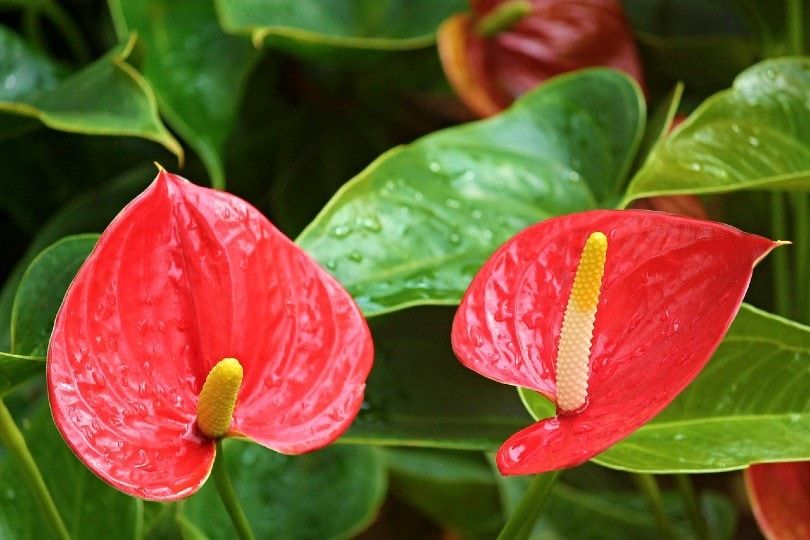
Sparking year-round interest with their gorgeous, glossy red spathes and contrasting deep green foliage, anthurium plants are some of the most valuable houseplants for uplifting the spirit of the home. Though their tropical tolerances demand sufficient warmth, even the most stunning varieties are forgivingly easy to grow, and maintaining them is a joyous project for indoor gardeners of all skill levels. Usually anthurium plants need to be repotted every 2-3 years.
A thriving, lush anthurium plant doesn’t have to be challenging to achieve, but as with many plants, the technique will define your results. Bring the most wondrous displays possible to your home with this guide on how and when to plant anthurium plants.
When to Plant Anthurium
As indoor plants, anthuriums can find a new home successfully at nearly any time of year, though there are optimal times to repot and take cuttings. Your anthurium plant will tell you it’s ready for a new pot when it sends out air roots, which are thick roots extending from the stem above the soil. Misting them or cutting them off are two acceptable ways of handling them, but you’ll likely want to move the plant to a new pot, as it risks becoming root bound.
Repotting anthurium plants is usually needed every 2–3 years. When it’s due, take the opportunity to take convenient cuttings for a new plant. You can propagate from an air root or a stem cutting at least 6 inches long with 2–3 nodes. Longer cuttings have better survival chances.
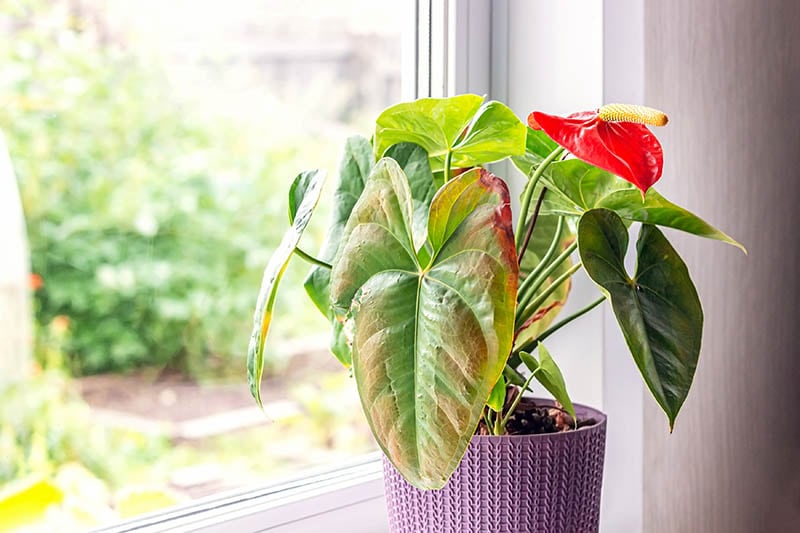
How to Plant Anthurium Indoors
Plant the cut end of your anthurium cutting into your prepared potting mix, dipping it in rooting hormone powder beforehand, if desired, to encourage growth. Water the potting mix thoroughly. With proper care and placement, new growth will emerge in about 5-6 weeks.
Getting the proper potting soil and choosing your pot position in the home are your first two action items when planting anthurium indoors. Set your plant up for its best chances to thrive by following these essential guidelines:
- Choose a pot with drainage and enough space for the anthurium to grow to give you more time before repotting
- Use a coarse, well-drained, and acidic potting soil
- Find a spot that will get 6 hours of bright but indirect sunlight each day
- Place the plant in a location where you can maintain temperatures between 65°F and 85°F
- Keep the plant away from heating and cooling vents
Many find an orchid mix with extra peat moss and sand makes the best potting soil for anthuriums. Alternatively, a convenient 50/50 mix of standard potting soil and orchid mix can offer appropriate conditions for healthy growth.
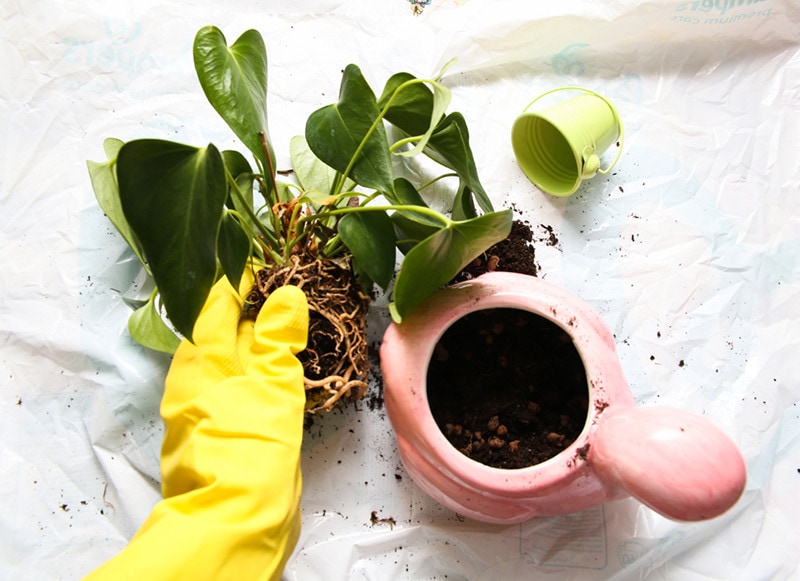
Lighting
Indirect but bright sunlight is necessary for a growing anthurium plant, making perfect placement a vital part of the plan. Aim for roughly 6 hours of quality light exposure, preferably in an east-facing window where it can capture cool rays in the morning. Direct sun can burn the leaves, turning them a pale yellow and eventually brown, but too little light will keep your plant from developing.
You may have to test different locations to find the best lighting in the house. If you find no convenient and accommodating spot, supplement the lighting with LED grow lights. To cut back on direct sunlight, sheer curtains, and Venetian blinds are simple additions that will give your plants a light filtration level similar to their natural growing conditions.
Stake the Plant
Depending on which of the 1,000+ anthurium species you’re growing, your plant may be epiphytic, meaning it appears more on other vegetation than in the soil. In a pot, these varieties cannot often support themselves. Use a concealed stake or small trellis to keep your plant upright if it droops.
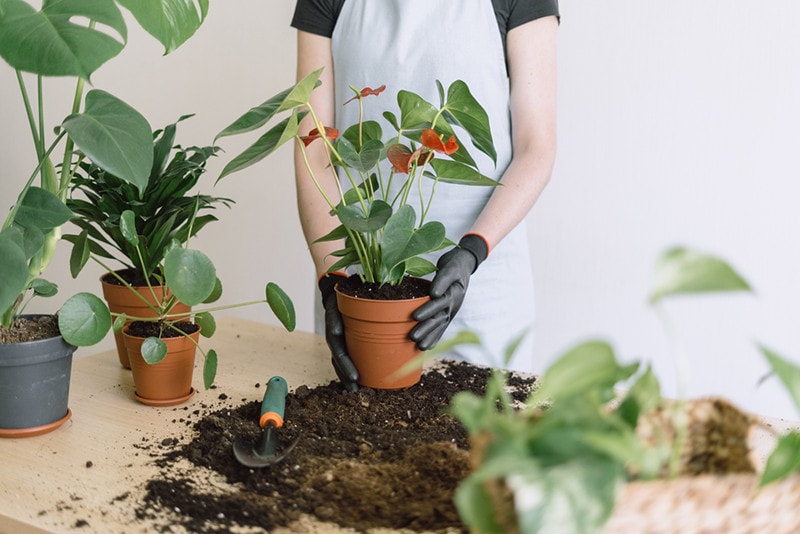
Maintain Humidity
Anthurium is a tropical plant native to hot, humid climates throughout Central and South America, and staying true to its roots is essential if you want to give it the best chance to thrive. Consistent moisture is crucial to maintain the exceptionally high 70–80% humidity levels it needs to grow, meaning misting every day is a must. Cover your anthurium cuttings with clear plastic wrap to retain moisture as they develop before they’re ready for repotting.
You can automate the humidifying process to a degree by elevating your anthurium plant on a bed of pebbles in a tray and adding enough water to keep the stones barely above it. The anthurium pot will sit atop the pebbles above the water line, letting it benefit from evaporation without allowing water to touch the soil and rot the roots.
Depending on your climate, you may have to use a humidifier to keep your anthurium plant healthy. Seasonal changes can be significant. Dry winter air might demand an upgrade to a humidifier. Keeping these considerations in mind while planting anthuriums will ensure they don’t go long stretches with low moisture and poor growth.
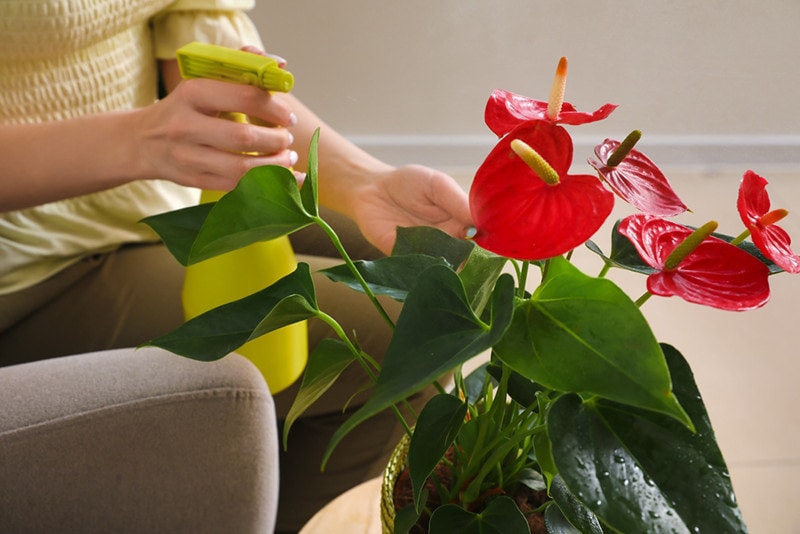
Growing Anthuriums from Seed
If you have patience, you can grow anthurium from seed in a soilless mix, preferably moistened vermiculite. Press the seed into the vermiculite about 1/8th an inch deep. Mist the soil after planting, and cover the seed pots to help them germinate in a hot, damp environment. Remove the cover for brief periods each day to let air circulate and release excess moisture. Keep the ambient temperature between 75°F and 85°F while the seeds develop.
Anthurium seeds germinate in about 5–10 days and are mature enough for repotting 4–5 weeks later. It will take 3–4 years before you see their gorgeous spathes. Pollinating your anthurium plants and growing berries to yield seeds can be an exhaustive and uncertain process. The wait makes it no more practical than taking cuttings unless you’re interested in seeing what kind of new plants you might create.
Final Thoughts
Anthurium plants are a long way from their home when they appear in ours. It takes special consideration to keep the indoor climate familiar and favorable. It takes a little know-how and sound preparation to plant anthuriums, but the reward for your simple efforts is incredible. Give them their separate slice of paradise, and your anthuriums will fill the space with a vibrant aura you can enjoy for years.
Featured Image Credit: manfredrichter, Pixabay
Contents


